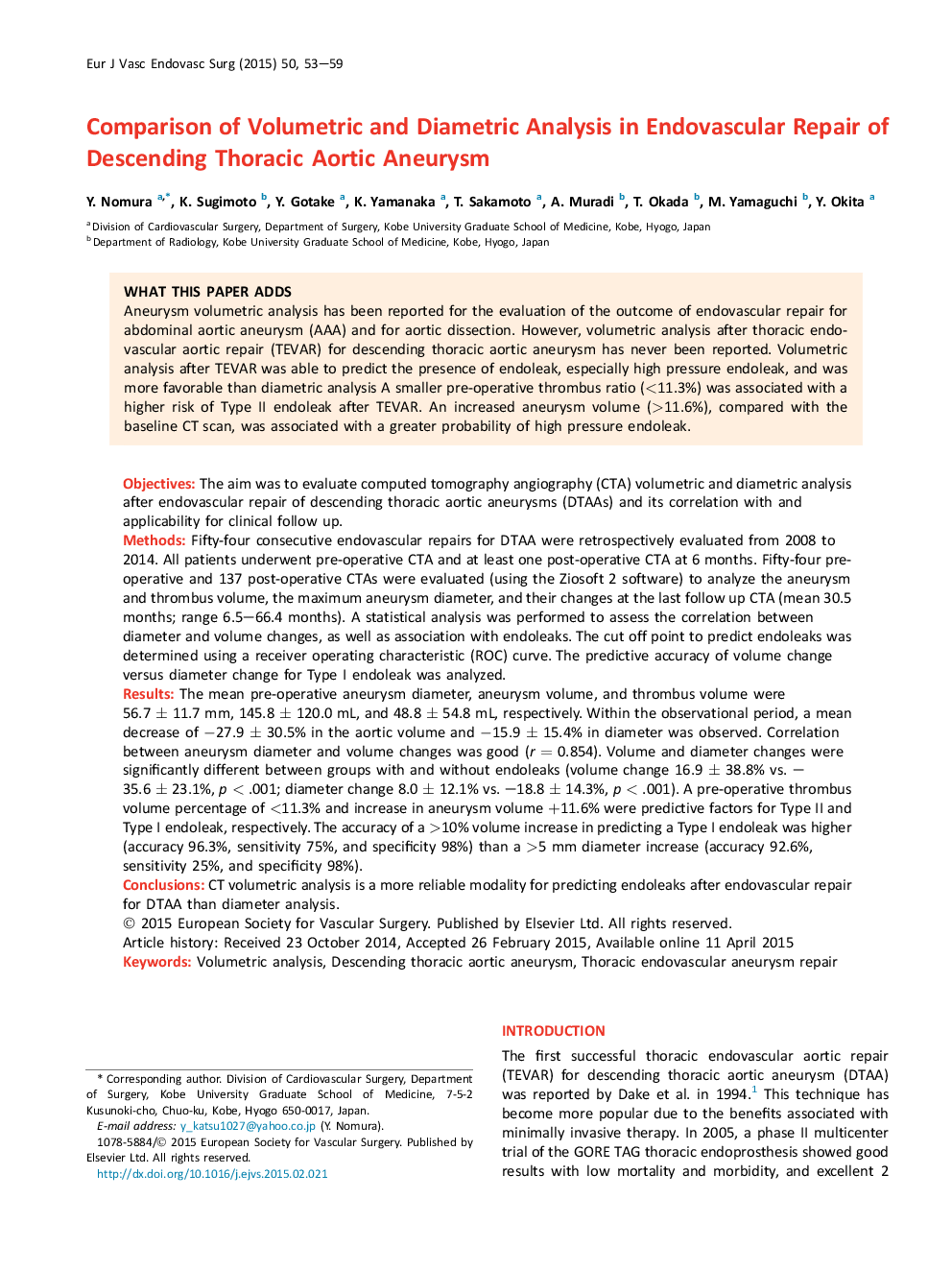| Article ID | Journal | Published Year | Pages | File Type |
|---|---|---|---|---|
| 2911884 | European Journal of Vascular and Endovascular Surgery | 2015 | 7 Pages |
ObjectivesThe aim was to evaluate computed tomography angiography (CTA) volumetric and diametric analysis after endovascular repair of descending thoracic aortic aneurysms (DTAAs) and its correlation with and applicability for clinical follow up.MethodsFifty-four consecutive endovascular repairs for DTAA were retrospectively evaluated from 2008 to 2014. All patients underwent pre-operative CTA and at least one post-operative CTA at 6 months. Fifty-four pre-operative and 137 post-operative CTAs were evaluated (using the Ziosoft 2 software) to analyze the aneurysm and thrombus volume, the maximum aneurysm diameter, and their changes at the last follow up CTA (mean 30.5 months; range 6.5–66.4 months). A statistical analysis was performed to assess the correlation between diameter and volume changes, as well as association with endoleaks. The cut off point to predict endoleaks was determined using a receiver operating characteristic (ROC) curve. The predictive accuracy of volume change versus diameter change for Type I endoleak was analyzed.ResultsThe mean pre-operative aneurysm diameter, aneurysm volume, and thrombus volume were 56.7 ± 11.7 mm, 145.8 ± 120.0 mL, and 48.8 ± 54.8 mL, respectively. Within the observational period, a mean decrease of −27.9 ± 30.5% in the aortic volume and −15.9 ± 15.4% in diameter was observed. Correlation between aneurysm diameter and volume changes was good (r = 0.854). Volume and diameter changes were significantly different between groups with and without endoleaks (volume change 16.9 ± 38.8% vs. –35.6 ± 23.1%, p < .001; diameter change 8.0 ± 12.1% vs. –18.8 ± 14.3%, p < .001). A pre-operative thrombus volume percentage of <11.3% and increase in aneurysm volume +11.6% were predictive factors for Type II and Type I endoleak, respectively. The accuracy of a >10% volume increase in predicting a Type I endoleak was higher (accuracy 96.3%, sensitivity 75%, and specificity 98%) than a >5 mm diameter increase (accuracy 92.6%, sensitivity 25%, and specificity 98%).ConclusionsCT volumetric analysis is a more reliable modality for predicting endoleaks after endovascular repair for DTAA than diameter analysis.
